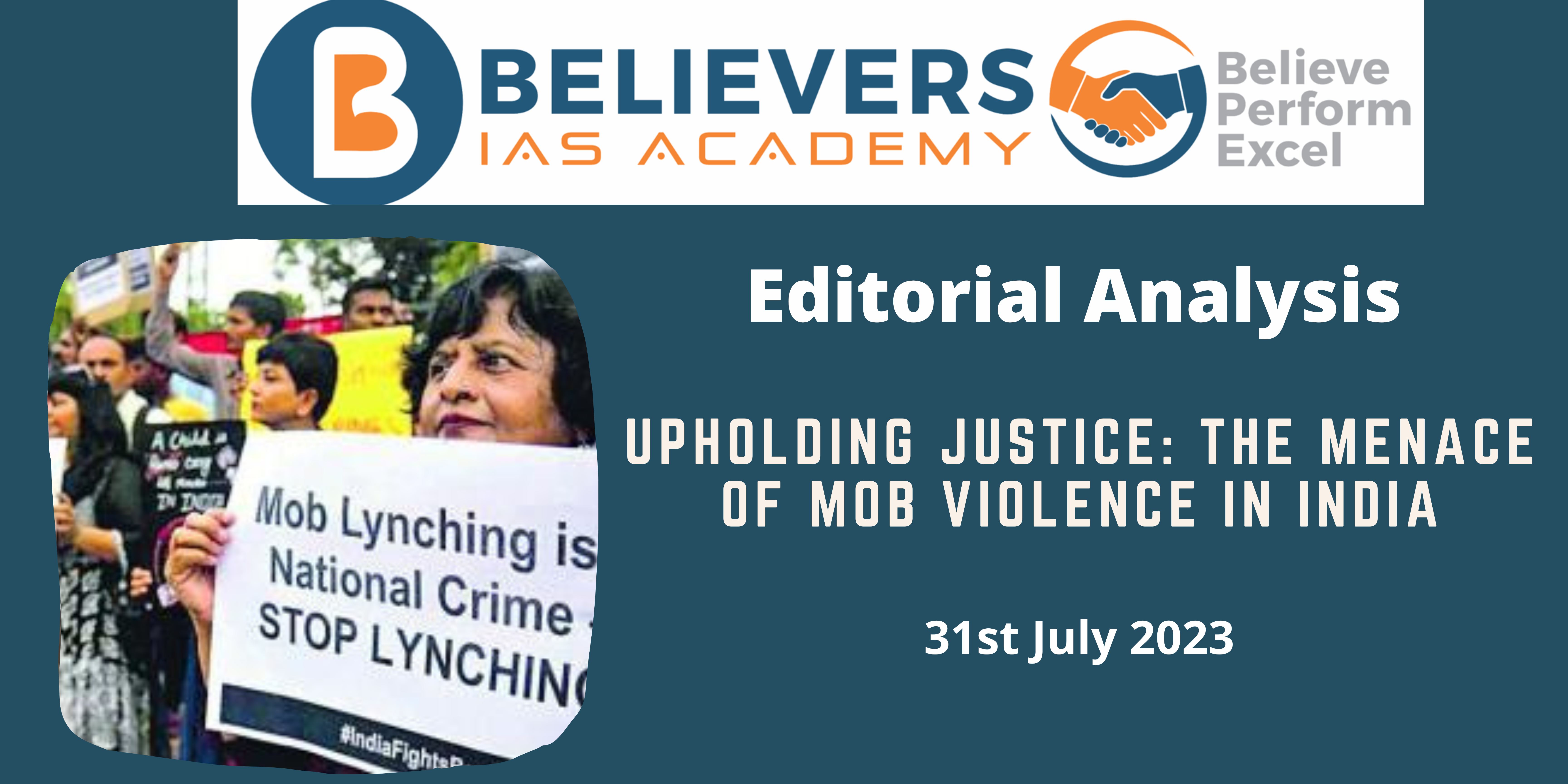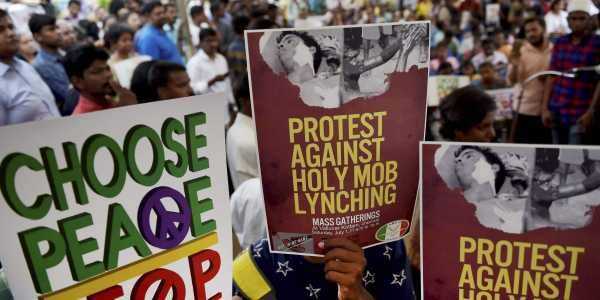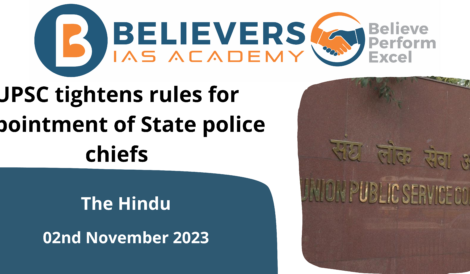Upholding Justice: The Menace of Mob Violence in India
Context:
The Supreme Court’s recent admonishment to the Union Government and various State governments for their consistent failure to combat mob violence and lynching against Muslims and marginalized communities, particularly by “cow vigilantes,” is a glaring shame.
Relevance:
GS – 02 (Government Policies & Interventions) (Indian Constitution)
Prelims:
- States which have passed laws against mob lynching.
- Poonawala case
- Provisions available against mob lynching.
Mains Question:
Explain the Supreme Court’s guidelines and measures to tackle mob violence and lynching and analyze the current situation in various states regarding their implementation. (150 words)
Dimensions of the Article:
- The Lingering Specter of Lynching
- Social and Economic Boycott: A Deplorable Reality
- Courts’ Call for Accountability
- Civil Society’s Crucial Role
The Lingering Specter of Lynching:
- The fact that lynching, mob violence, and so-called “cow vigilantism” continue to persist even after the 2018 judgment highlights the nonchalance of the Union Government and the concerned States, particularly in northern India.
- Such incidents, which involve criminals perpetrating violence against minorities under the guise of cattle transportation, reflect a broader issue stemming from stereotyping and demonization of minority communities.
- The ideological underpinnings of certain political entities, such as the Bharatiya Janata Party, have contributed to the perpetuation of such violence.
Social and Economic Boycott: A Deplorable Reality:
- In addition to vigilantism, the minority communities also face social and economic boycott in states where they receive political patronage. This patronage fosters an environment where discrimination and violence against these communities thrive.
- Addressing mob violence demands confronting these deeply ingrained practices and dismantling the systems that enable such discrimination.
Courts’ Call for Accountability:
- The Supreme Court’s intervention, through the issuance of guidelines and orders to state agencies, signifies a push for accountability.
- By reminding the authorities of their duty to implement measures against mob violence, the Court seeks to curb these atrocities and safeguard ordinary citizens.
- However, solely relying on judicial fiat will not suffice to eradicate mob violence entirely.
Civil Society’s Crucial Role:
- Effectively combatting mob violence necessitates collective action from civil society. Initiatives that promote fraternity and understanding between communities are vital in countering the “us versus them” mindset that fuels violence.
- Drawing lessons from regions like Tamil Nadu, where secular and rational movements historically thrived, we find that incidents of mob violence are rare, and political representatives face public outrage when they occur.
Way Forward:
Strengthening the Judiciary: To ensure the proper implementation of guidelines, the judiciary must continue to play an active role in monitoring state agencies’ actions and holding them accountable for their failures. Regular reviews and assessments of the progress made in tackling mob violence will be essential.
Comprehensive Legislative Reforms: Addressing the root causes of mob violence requires comprehensive legislative reforms that specifically target hate crimes, vigilantism, and lynching. Stricter laws with severe penalties for those involved in such acts will act as a deterrent.
Public Awareness and Sensitization: Government agencies, in coordination with civil society organizations, must engage in extensive awareness campaigns and sensitization programs to promote communal harmony and discourage violence based on religious or caste differences.
Conclusion:
The Supreme Court’s stern reminder to the Union Government and several State governments of their failure to combat mob violence and lynching is a much-needed wake-up call. The guidelines issued by the Court in 2018 provide a framework for action, but their implementation remains lacking. Eradicating mob violence demands a concerted effort from the government, judiciary, and civil society to foster an environment of fraternity and mutual respect. A future free from the horrors of mob violence can only be realized through a unified commitment to safeguarding the lives and dignity of all citizens.





